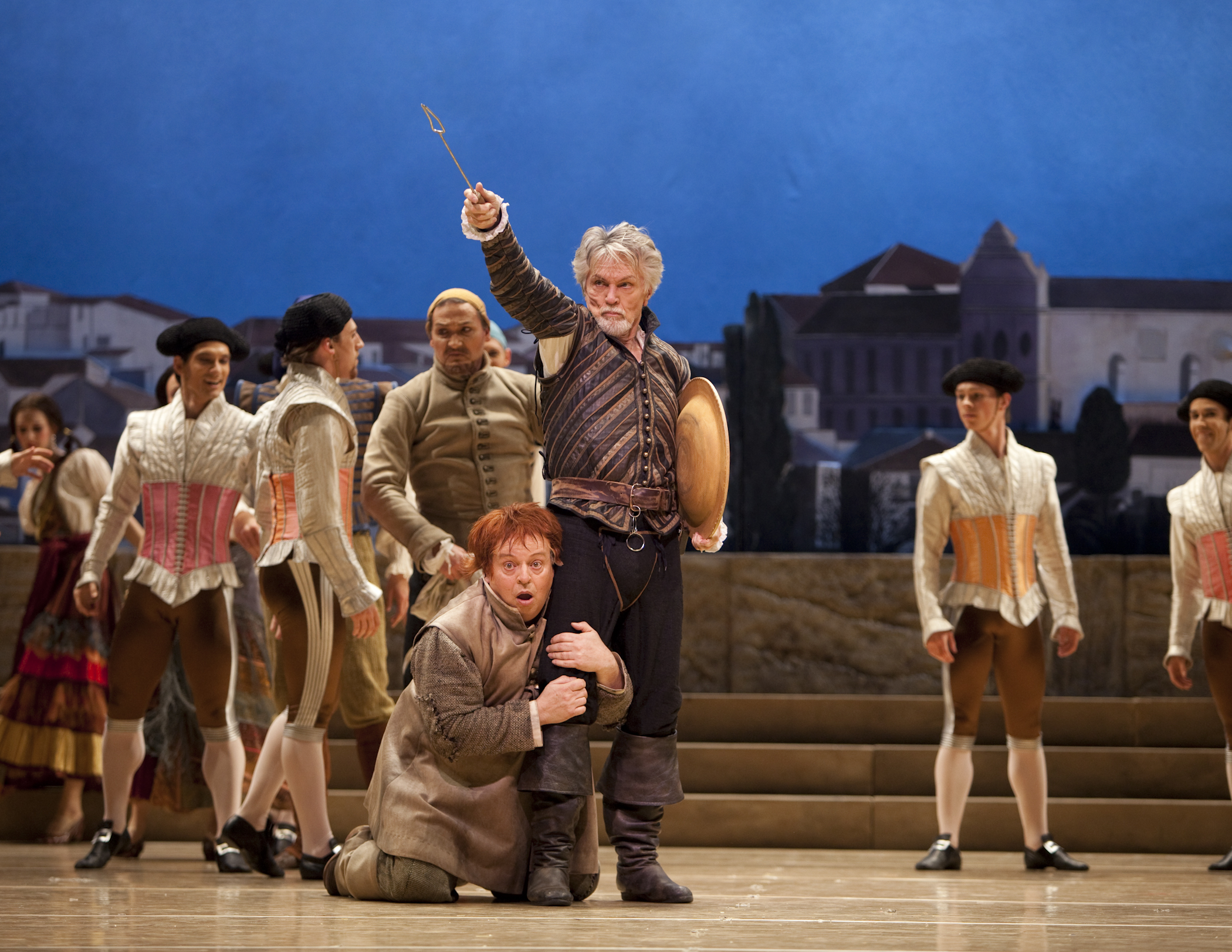For opera, it’s La Bohème. At the symphony, it’s probably Beethoven’s Ninth. Every art form has a surefire work in its repertory—and for ballet, it’s Don Quixote. Pacific Northwest Ballet’s new production of this old favorite sports lavish sets and costumes by Jérôme Kaplan (including a whole salon’s worth of wigs), but the real thrill is the staging by Alexei Ratmansky. Alongside his original choreography (PNB performed his charming Concerto DSCH last season), he’s been reworking several repertory classics. His new Don Quixote, based on Marius Petipa’s 1869 choreography and Ludwig Minkus’ score, debuted two years ago at the Dutch National Ballet. PNB director Peter Boal, who had been looking to add another program-length work to the repertory, flew to see the Amsterdam premiere, then promptly returned home for some intensive fundraising.
While some productions of the traditional narrative ballets have been slimmed down over time, replacing mime and acting with extended sequences of abstract dancing, Ratmansky is committed to the hubbub of the big crowd scene. He has staged detailed, realistic byplay for everyone onstage, from the principals at the center of the story to the quartet of children. (They steal fruit from a peddler, follow the bullfighters parading through the town square, and generally get underfoot.) You could spend the whole three-hour production—with two intermissions—simply watching the daily life of this little village.
That probably wouldn’t be the best use of your time, however, since the principal dancers are tearing up the stage. And filling every inch of it, since PNB is using every dancer in the company for this production. Four couples play the principal roles, and last weekend I saw three of them: Carla Körbes (freshly dyed brunette) with Karel Cruz; Kaori Nakamura with Lucien Postlewaite; and Carrie Imler with Batkhurel Bold. Although each pairing reveled in the Spanish-inflected choreography, Imler probably gave the snappiest performance, flashing through brilliant pointe work and powerhouse jumps, showing speed and elevation as the sassy Kitri.
In the lightweight story (a mere subplot in Cervantes’ novel), Kitri fools her father into letting her marry the handsome but poor Basilio. Complications ensue; they flee into the mountains; and assistance is offered by the delusional Don Q and his sidekick Sancho Panza (non-dancing actors Tom Skerritt and Allen Galli, respectively).
Don Q is often a a vestigial figure in this ballet, but Ratmansky has fleshed out the part. He and Sancho are woven into almost every scene. It’s a good decision: Skerritt makes a lanky, dreamy Don, yearning for the romance of earlier times; and Galli brings considerable mime and commedia dell’arte skills to his Zero Mostel–ish Sancho. Their choreography is full of classic pratfall-inspired shtick, until the end of the performance when they march off together to find new adventures, a pair of heroic clowns.








